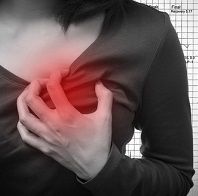Article
Hypertension: Physically Strenuous Jobs Add to Women's Heart Risks
Author(s):
Exercise is known to lower hypertensive women's risk of heart disease, but not when it comes to strenuous nursing activities, a Danish study found. The findings could apply to other jobs involving physically demanding tasks including retail work, teaching, and child care.

Women with hypertension working at strenuous jobs often end up with heart disease as well, a new analysis of a Danish nursing survey shows.
Physical activity in the form of daily moderate exercise is proven to reduce hypertension.
Unfortunately, spending 8 or 12 hours on your feet, reaching for and moving heavy equipment (and often heavier patients) may not have the desired effect said Karen Allesøe, a doctoral student at the University of Southern Denmark, writing in the European Journal of Preventive Cardiology,
.
Hypertensive nurses in physically demanding roles were at risk for ischemic heart disease nearly three times more than colleagues with healthy blood pressure who reported their job activity was moderate.
“The two risk factors appear to work together, resulting in an even greater incidence of heart disease” Allesøe wrote.
,
In a significant instance of additive interaction, where these two factors co-exist their collective impact seems to be more than the sum of their parts.
Results among hypertensive nurses with high physical activity came to sixty additional diagnoses of ischemic heart disease per 10,000 person years. The physical exertion factor is associated with five cases per 10,000 person years, hypertension alone, fifteen per 10000 person years, the remaining extra 40 incidences get chalked up to additive interaction. The study is based on data culled from 12,093 female nurses participating in the Danish Nurse Cohort Study. High response rate and facility with medical questions make the nursing population ideal for epidemiological studies, the authors said. The Danish Nursing Organization granted researchers access to their members, 86% of whom participated in the first of the three waves of the 1993-2008 survey.
Self-reported medical history was cross-referenced to the National Hospital Registry that catalogs information on admissions, diagnosis, and treatment for each Danish citizen.
For purposes of the study job activity was categorized as “sedentary”, “moderate” (mainly standing and walking but not physically exerting), or “high” (standing, walking, physically exerting including fast and/or heavy lifting and carrying). Twelve percent of the nurses identified as hypertensive.
As for job-related activity, 46% of nurses studied fell into the high physical activity category, 34% in moderate, and 19% mostly sedentary.
Previous studies cited show during the repeated periods of elevated heart rate this type of activity demands the heart spends more time in systolic phases, where arterial plaque formations that lead to atherosclerosis occur more frequently. Chronic hypertension also causes atherosclerosis.
The team’s findings might hold true in any of the physically demanding jobs often held by women—teachers or child care workers, letter carriers, retail employees. According to Allesøe, and colleagues, “Our results may also apply to other occupations that require lifting or carrying heavy loads and standing or walking for many hours, but this needs to be confirmed in other studies.
The study is entitled “Are Hypertensive Women at Additional Risk of Ischaemic Heart Disease from Physically Demanding Work”.




